2008 OlympicsJul 12, 2013 by Elizabeth Stranahan
Debatable Moments: Part 2
Debatable Moments: Part 2
Debatable Moments: Part 2
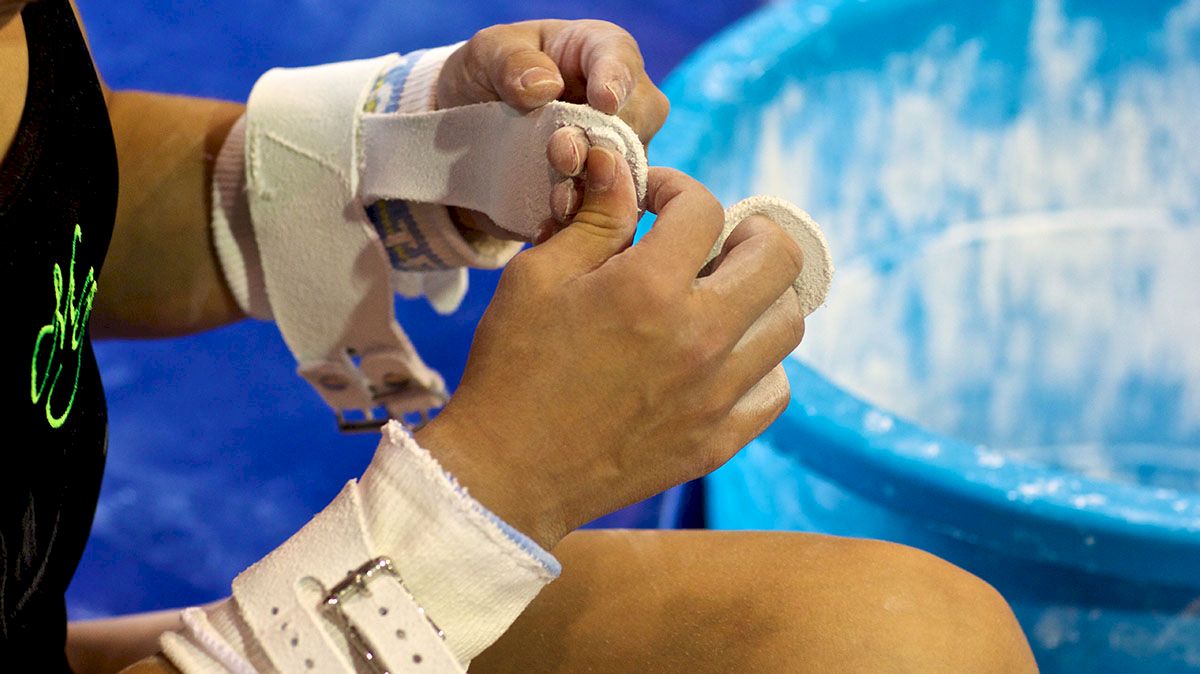
We return once more to the world of fueds, fall-outs, and downright face-offs in part two of our Debatable Moments series. Today we tackle the 2004 Athens Games as well as scoring snafus. So pull out your opinions, and let's get started.
Athens Altercations

Photo: Paul Hamm during his 2012 comeback attempt at Winter Cup.
The Athens Games in 2004 did not come without complications of their own. As has become a theme, the individual all around final provided a predicament, this time at the men's competition. In the all around final, American Paul Hamm took the gold by a margin of 0.012, tying Gutsu/Miller for the smallest victory margin in Olympics history. However, only moments after Hamm's coronation as the all around recipient, the backlash descended. It appeared that bronze medalist Yang Tae Young was awarded an incorrect start value on the pommel horse; the judges flashed a 9.9 instead of a 10.0 because they incorrectly mistook his dismount a "belle" for the less difficult "morisue". The FIG performed a video review on the routine and deemed that the start value was indeed wrong.
But this is where things get tricky. Increasing Young's start value placed him above Hamm as the rightful all around champ. However, in accordance to the "Rules of Play" athletes must submit score protests before moving on to their next event. As the mistaken start value was not formally challenged until after the competition concluded, the IOC would not alter the standings; Hamm remained on top. Following the Games, the Korean Olympic Committee brought the case to the Court of Arbitration for Sport where both Young and Hamm were called to speak at the hearing, but after months of debate the court finally dismissed the case. They ruled the score was protested too late, so Hamm remained the rightful owner of the medal. Shortly following the ruling, the Korean Olympic Committee awarded Young a gold medal and $20,000 to demonstrate their support for the athlete.
The all around final was not the only Athens argument. The men's high bar final also brought out the nay-sayers. Russia's Alexei Nemov impressed the crowd with his incredible routine in the men's high bar final. The routine featured a total of six release skills, four of them occurring in a row making his routine one of the riskiest of the night. Despite the high difficulty, Nemov received a score of 9.725 placing him in third place with competitors still to come much to the crowd's apparent dismay. Immediately after the score flashed, the audience went wild booing so boisterously that the competition was suspended for nearly fifteen minutes. Pressured by the crowd, the judges reevaluated Nemov's routine this time awarding him a 9.762. The change did not put the crowd at ease, though. It was not until Nemov himself stepped onto the podium and asked the crowd to quiet down himself that the competition could resume. In the end, Nemov found himself seated fifth, well out of medal range. Both the IOC and fellow competitors spoke of Nemov as a class act in regards to the situation. The Russian Olympic Committee gave Nemov $40,000 after the Games to commend his embodiment of the Olympic spirit.
Nemov missing out on a medal, however, continues to outrage fans. It is also cited as a common validation for the switch from the 10.0 scoring system to the current system that evaluates both difficulty and execution individually. But as we will soon see, neither system is flawless, and both make for some interesting conversation.
Runway Ruckuses
In 2008, the Beijing Olympic Women's Vault Final caused quite a stir when two favored athletes failed to reach the medal stand. First on the controversy runway is Anna Pavlova of Russia. The Olympic vault final requires gymnasts to perform two different vaults. Pavlova performed an Amanar for her first vault to receive a 15.625, a score that put her within fighting distance of the podium. For Pavlova's second vault, she completed a clean yurchenko half-on, layout half-off. However, the judges ruled that Pavlova performed her second vault without the green light, the signal from the judges that they were ready to begin. Thusly, the judges awarded Pavlova a 0.00 for her second vault taking her out of medal contention. Despite strong and immediate protest from the crowd, the judges refused to award Pavlova a score for the second vault. Harsh though the ruling may seem, it stands to this day, and Pavlova misses out on this potential medal-winning vault.
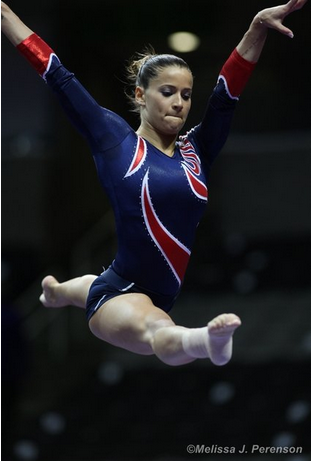
Alicia Sacramone repping her 2008 Olympic vault finals leo at the 2012 Olympic Trials. Photo by Melissa J. Perenson.
Pavlova's nil vault was not the only controversy of the '08 Vault Final. American Alicia Sacramone possessed the best hope for USA bringing home a medal in the vault final. And when front-runner Cheng Fei of China fell on her second vault, it seemed Sacramone would be a lock for the podium. Under the old code that's how the chips would have fallen, but the 2008 Beijing Olympics operated under the new scoring system where both difficulty and execution get taken into consideration. Cheng Fei's difficulty hovered nearly a point above Sacramone's (13.0 to 12.1 respectively). Fei's difficulty outweighed her drastic landing mistake in the end, placing her in third place and pushing Sacramone off the awards stand.
Sacramone's loss to Fei brought many to question the code. Should judges reward difficulty to the extent that falls on extremely difficult skills can reign over well-executed, but less difficult ones? Before the pitch forks are drawn and the mob collected, remember American McKayla Maroney, the favorite for the 2012 Vault Final also took silver with a fall. Awarding Sacramone a medal means stripping Maroney of hers, so think carefully when navigating this debate.
Silver Medal Scandals
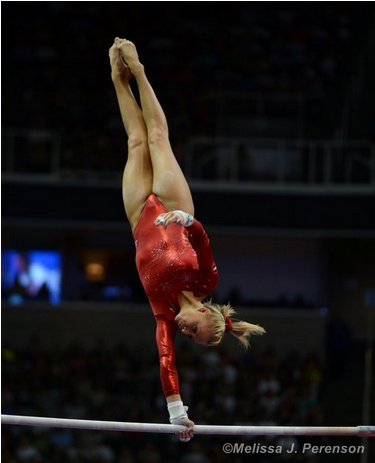
Nastia Liukin on the bars, often considered her specialty. Photo by Melissa Perenson.
Another 2008 Olympian feeling the wrath of the code was American Nastia Liukin. A renown bar worker, it came as no surprise when Liukin topped the leader board tied with the accomplished He Kexin of China. While both gymnasts performed highly difficult routines and performed them well, ties are no longer allowed in the Olympic Games, so out rolls the tie-breaker bringing with it discontent. The 2008 FIG code breaks ties by awarding the gymnast with the highest degree of difficulty (DOD). Not a problem, but both Kexin and Liukin hold the same DOD at 7.7, so they remained tied. The next step, the scores of the four middle judges get averaged to see who comes out on top. Amazingly, Kexin and Liukin again averaged to identical scores. So then the third round of regulations ensued to break the tie: of the four remaining judges, the three lowest scores were averaged. After the third round of rules, the tie was officially broken in favor of Kexin. Liukin settled for silver at the 2008 bar final, and the audience left scratching their heads and pulling out their calculators.
This caps off the second installment of our Debatable Moments series, but fret not! Part three arrives soon with plenty more scenarios worthy of deliberation. In the meantime, let us know what you think. Or, click here to catch up on part one.Vote in our poll, and tell us who you think should own the 2004 men's all around gold, or weigh in on the other tiffs in the comments.
Related Content
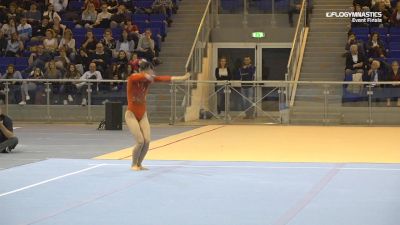 Replay: Ayumi Niiyama - Floor, Japan - 2019 City of Jesolo Trophy
Replay: Ayumi Niiyama - Floor, Japan - 2019 City of Jesolo TrophyJun 26, 2023
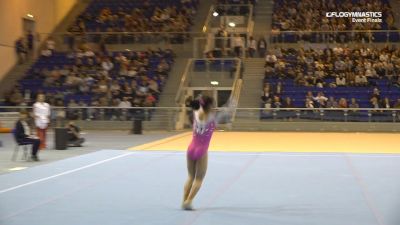 Replay: Zhang Jin - Floor, China - 2019 City of Jesolo Trophy
Replay: Zhang Jin - Floor, China - 2019 City of Jesolo TrophyJun 26, 2023
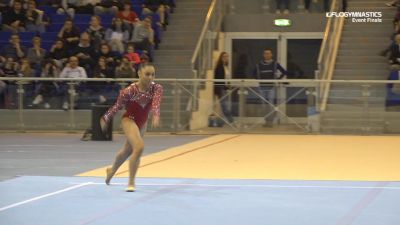 Replay: Emma Malabuyo - Floor, USA - 2019 City of Jesolo Trophy
Replay: Emma Malabuyo - Floor, USA - 2019 City of Jesolo TrophyJun 26, 2023
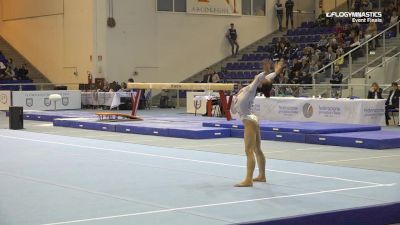 Replay: Qi Qi - Floor, China - 2019 City of Jesolo Trophy
Replay: Qi Qi - Floor, China - 2019 City of Jesolo TrophyJun 26, 2023
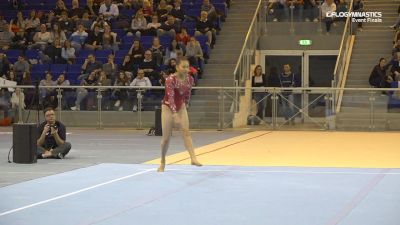 Replay: Sunisa Lee - Floor, USA - 2019 City of Jesolo Trophy
Replay: Sunisa Lee - Floor, USA - 2019 City of Jesolo TrophyJun 26, 2023
 Replay: Desiree Carofiglio - Floor, Italy - 2019 City of Jesolo Trophy
Replay: Desiree Carofiglio - Floor, Italy - 2019 City of Jesolo TrophyJun 26, 2023
 Replay: Lander vs Mars Hill | Mar 28 @ 6 PM
Replay: Lander vs Mars Hill | Mar 28 @ 6 PMMar 29, 2024
 Replay: Coker vs Wingate | Mar 21 @ 6 PM
Replay: Coker vs Wingate | Mar 21 @ 6 PMMar 22, 2024
 Replay: Wingate Tri-Meet - Acrobatics & Tumbling | Mar 15 @ 5 PM
Replay: Wingate Tri-Meet - Acrobatics & Tumbling | Mar 15 @ 5 PMMar 15, 2024